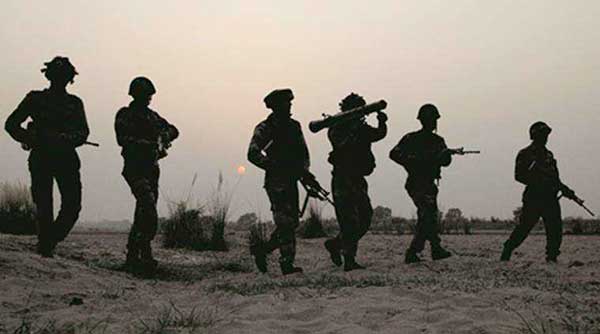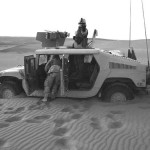
After years of speculation the Government has finally bitten the bullet and formally named the heads of the Armed Forces Special Operations Division (AFSOD) and the Defence Cyber Agency (DCA), with that of the Defence Space Agency (DSA) expected to follow shortly. These three Tri-Service Divisons will function under the Integrated Defence Staff supposedly to foster “integration, synergy and economy” among elements of the three services. By standardizing and integrating their training, equipping and logistics it is hoped that their utilization can be optimized, providing maximum bang for bucks.
All of this is meant to convince us that our military hierarchy understands modern warfare in all its complexities and is taking the necessary steps needed to ensure that it has the tools at its disposal to deal with the full spectrum of conflict, from Operations Other Than War to a Nuclear Conflagration. While one cannot speak about the capabilities that either the DCA or the DSA may plan to possess, there is little doubt that the establishment of AFSOD in its present form leaves much to be desired. In fact, if one were to be brutally honest, its establishment is nothing but a poorly concealed effort to pull the wool over the eyes of our political leadership, unless they were in on it, and the tax paying public.
While the need for establishing a Special Operations Command, as suggested by the Naresh Chandra Committee in 2012, may well be debatable, it is a given that our strategic ambitions are constrained by the fact that we face two nuclear armed adversaries with disputed borders. Given that one of these nations is an economic and military powerhouse, which therefore implies that the primary focus of our security establishment must remain on our immediate neighbourhood. We cannot however, lose sight of the fact as we rapidly develop, Price Waterhouse Cooper considers India to be the third largest economy in PPP terms in their Feb 2015 report “The World in 2050”, our sphere of influence is also likely to expand beyond the regional.
The growing Indian diaspora and increasing economic interests world-wide make it necessary for the Government to look at enhancing its capabilities to protect its interests abroad. It must have the ability to utilize its vast range of assets in a coordinated manner that would provide the necessary synergy required to ensure that we can successfully meet our foreign policy, security and economic objectives in our areas of interest and influence. This requires tri-service special operations capability grounded in the reality of our circumstances that will enable focused capacity building and the establishment of linkages within the security establishment and other ministries towards their employment at the strategic and operational level, especially with regard to the conduct of “Out of Area” contingencies.
Sadly, the AFSOD is hardly in a position to do anything of the sort, given the meager resources that have been placed at its disposal. The very fact that it is being established outside of the National Capital Region ensures that its General Officer Commanding can never become the single point advisor on the conduct of Special Operations to either the Chiefs of Staff Committee or the Cabinet Committee on Security, which he needs to be, given the type of tasks envisaged to be undertaken. However, all this apart, what is truly despicable and astounding is the blatant attempt to use bureaucratese to stall logical development in order to protect vested interests. All of this will in the end, be at the cost of lives because special operations are not only inherently risky and dangerous but also have very little margin for error.
One cannot help but notice the similarity in the manner in which the United States military went about establishing its joint special operations capability. As most may know the disaster of “Operation Eagle Claw” in 1980, the failed mission to rescue American hostages held in Iran, was attributed to lack of jointmanship and a convoluted command and control set- up, among other things. In order to correct the situation the Army first tried to consolidate all Army Special Operations Forces (SOF) under 1st Special Operations Command in 1982. The lack of jointness led to concern within the Senate Armed Services Committee which resulted in the Department of Defence creating the Joint Special Operations Agency in January 1984.
This Agency was however flawed as it had neither operational nor command authority over any SOF. In 1986 the Goldwater- Nichols Defence Reorganization Act was passed which appointed the Chairman Chiefs of Staff Committee as the single point advisor to the Secretary of Defence and the President. In addition, they also forced the establishment of Joint Theatre Commands, with the Commander- in- Chief’s also having direct access to the Defence Secretary and the President. Despite stiff opposition the Nunn-Cohen Bill was passed in 1987 and amended the Goldwater-Nichols Act to establish the United States Special Operations Command under a four star C-in-C as a separate command which supported other theatre Commands. In 2014 it was re-designated as a combatant command.
Clearly, it is not in our interest to undertake such a torturous process for developing our SOF capability. Given our limitations in terms of resources and employability we must play smart and establish an agile and flexible architecture that ensures we meet all our operational requirements, while at the same time avoiding establishing bureaucratic silos and duplication of capabilities, visible elsewhere. While military reorganizations tend to be carried out incrementally, given the nature of operational commitments, in the context of our SOF the necessity for transformative changes is inescapable.
History tells us that our political leadership and bureaucracy, both civilian and military, are extremely averse to change as we are inclined to aggressively protect our own turf. However, as SOF will play an increasingly vital role in protecting our national interests in the future it would be logical to reorganize them in the manner that they not only meet our future needs without the need for additional changes, but also show the way forward in enhancing tri-service jointness. This will only be feasible, given the entrenched views that exist, if it is a top driven exercise initiated at the highest level. The military leadership has choices to make. It can either remain wedded to age old perceptions and ignore the need for change or they can take the initiative and turn it into a modern military that we deserve and can be proud of. That we are fated to repeat our follies, till we are willing to learn from history is an old adage that’s best not forgotten and a repeat of 1962 is the last thing that our political, military and bureaucratic leadership would wish upon themselves.





I salute to Army